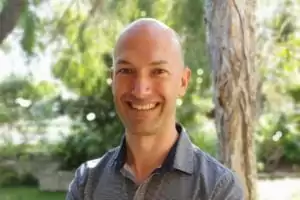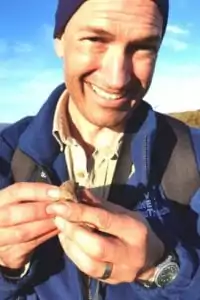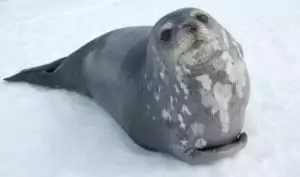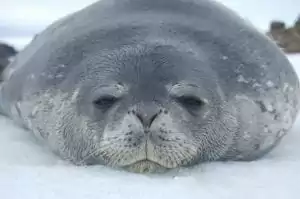Dr. Phil Tucak BSc BVMS, is a veterinarian, communications manager, and journalist, and as the Wildlife Outreach Vet, he also works to share the conversation about conservation. Based in Perth in Western Australia, Phil develops communications content for veterinary businesses and science and conservation organizations.
He regularly writes content for the Australian Veterinary Association and he curated content for the AVA’s Return to Work online learning resource.
Phil has previously worked as Communications Manager for the Australian Wildlife Conservancy, Communications and Interpretation Coordinator for Perth Zoo, as a journalist for SBS News, and as a producer and presenter for the ABC. In 2020, Phil was awarded the Veterinary Business Professional of the Year.
Why did you decide to become a vet?
I grew up with a love of nature, the outdoors, and animals. I also enjoyed creative pursuits such as writing and media production. I decided on a career as a veterinarian as it involved working with animals, including wildlife. I think I also liked the diversity of potential career options available and being interested in science communication and media, I intended to hopefully combine these interests in being both a veterinarian and science communicator.
Where did you study? Say something about your vet school.
I completed my veterinary training at Murdoch University in Perth. It is a fantastic university, and the vet school had its own farm, inspiring staff and there were opportunities to do practical placements at nearby facilities like Perth Zoo. Apart from learning everything about becoming a veterinarian, I think one of the main things I enjoyed about my time at university was the many enduring friendships that I developed.
You are a veterinarian and you also do scientific writing and communications management; If you had to choose, what would it be? Or, how do you combine both?
I work part-time in companion animal practice at Cottesloe Vet and outside of this the majority of my work is doing science communication and communications management, which is related to veterinary, science, and conservation projects.
I’ve also been involved in many wildlife conservation projects both as a vet and in helping to share the conversation about conservation through writing and other media work. I really enjoy working with animals and storytelling, and there is quite a bit of cross-over in the work I do, combining my expertise as a veterinarian and science communicator.
Tell us about being a Wildlife Outreach Vet?
As the Wildlife Outreach Vet, I work to share the conversation about conservation, through storytelling, media production, and knowledge exchange. The idea for the Wildlife Outreach Vet came from wanting to help vets, scientists, researchers, businesses, and conservation organizations to share their stories and better engage with the community.
Showcasing conservation activities and scientific research, this helps aid community engagement by enhancing understanding of the many threats facing Australia’s unique wildlife and habitats. Through this awareness raising, comes the potential to garner further support for conservation activities. So it’s a circular strategy to document, share, and engage, and as the ripple of knowledge extends outwards, further positive outcomes for conservation can be made.
I also bring my veterinary expertise to this work in terms of utilizing my clinical knowledge together with a focus on animal health and welfare. Some examples of recent projects I’ve been involved with include contributing to the development of an online training resource about wildlife disease risk analysis, assisting with field survey work or threatened wildlife species, and contributing as a board member of Wildlife Health Australia and as an executive committee member of the Australian Veterinary Conservation Biologists.
You are Veterinary Business Professional of the Year 2020; Can you tell us more about that award and what it takes to be Veterinary Business Professional of the Year?
This award is from the Australian Veterinary Association and recognizes technical excellence in the field of veterinary business and outstanding service contribution to the veterinary business over time. I was awarded Veterinary Business Professional of the Year for my contribution to the veterinary profession over the last 20 years, and my work as a storyteller and educator to bring veterinary and conservation science to a broader audience, and helping to promote the veterinary profession and the key role vets play in support of wildlife and environmental sustainability.
It was really awesome to receive this award, and especially during this busy year which has highlighted the importance of communication and storytelling in terms of engaging with the community about animal health during these unprecedented times.
I’m very thankful to the Australian Veterinary Association and the Veterinary Business Group for the award, and also want to thank my colleagues and contacts across the veterinary, conservation, media, and communications sectors for supporting my work and career.
You do wildlife photography, would you like to share what is the most exciting photoshoot you did? Or maybe some intriguing story from behind the camera that you will remember forever?
I really enjoy photography and television production, and I’ve also been fortunate to have worked as a television producer and presenter, which has helped me hone my photography skills in terms of gaining a good understanding of how to best frame a shot when photographing in the field, and considering how to produce images or video that can form a compelling story.
One of my most memorable experiences with wildlife photography was in Antarctica where I was fortunate to spend a summer working as a vet on a seal research field trip. The research was involved with studying the population dynamics of Weddell Seals, and we were weighing and measuring adult female seals and their pups.
The young seal pups were delightfully cute and being up close to them on the sea ice offered the opportunity to take some photographs – there’s one photo that springs to mind, that I took when lying on the ice right in front of a seal pup, and to see all the texture and detail in the seal’s coat and face is amazing.
Through science communication and storytelling, I really enjoy sharing stories about conservation and animals and also helping others to share their stories.
Whether you’re an individual, have a veterinary business, or are involved with a conservation organization, I think engaging with the community through storytelling and science communication is vital to building a connection and trust, and helping to educate and inform – to raise awareness about important animal health and conservation issues.
And no worries if writing or science communication is not your forte, the good news is that there are people like me who can help you.
Connect with Dr. Phil Tucak on LinkedIn




